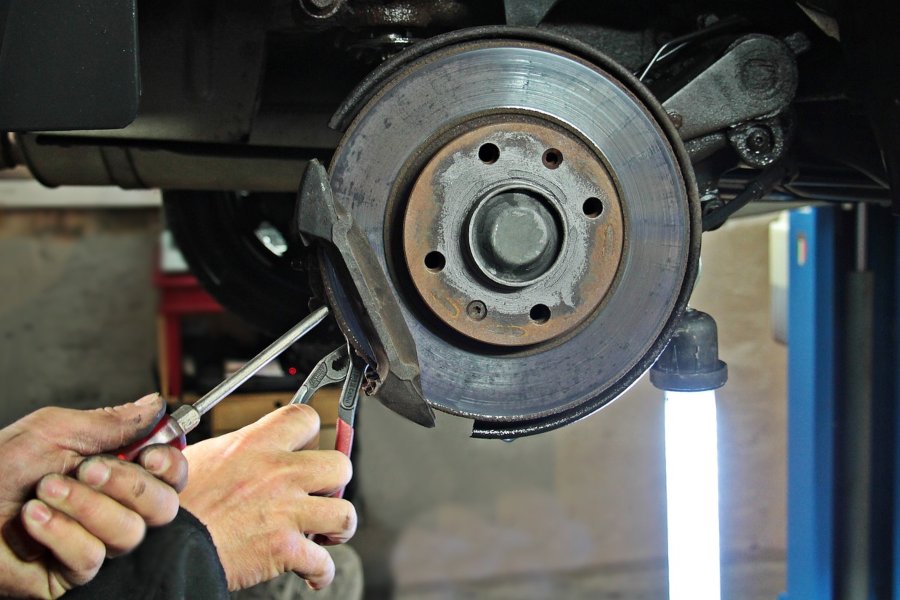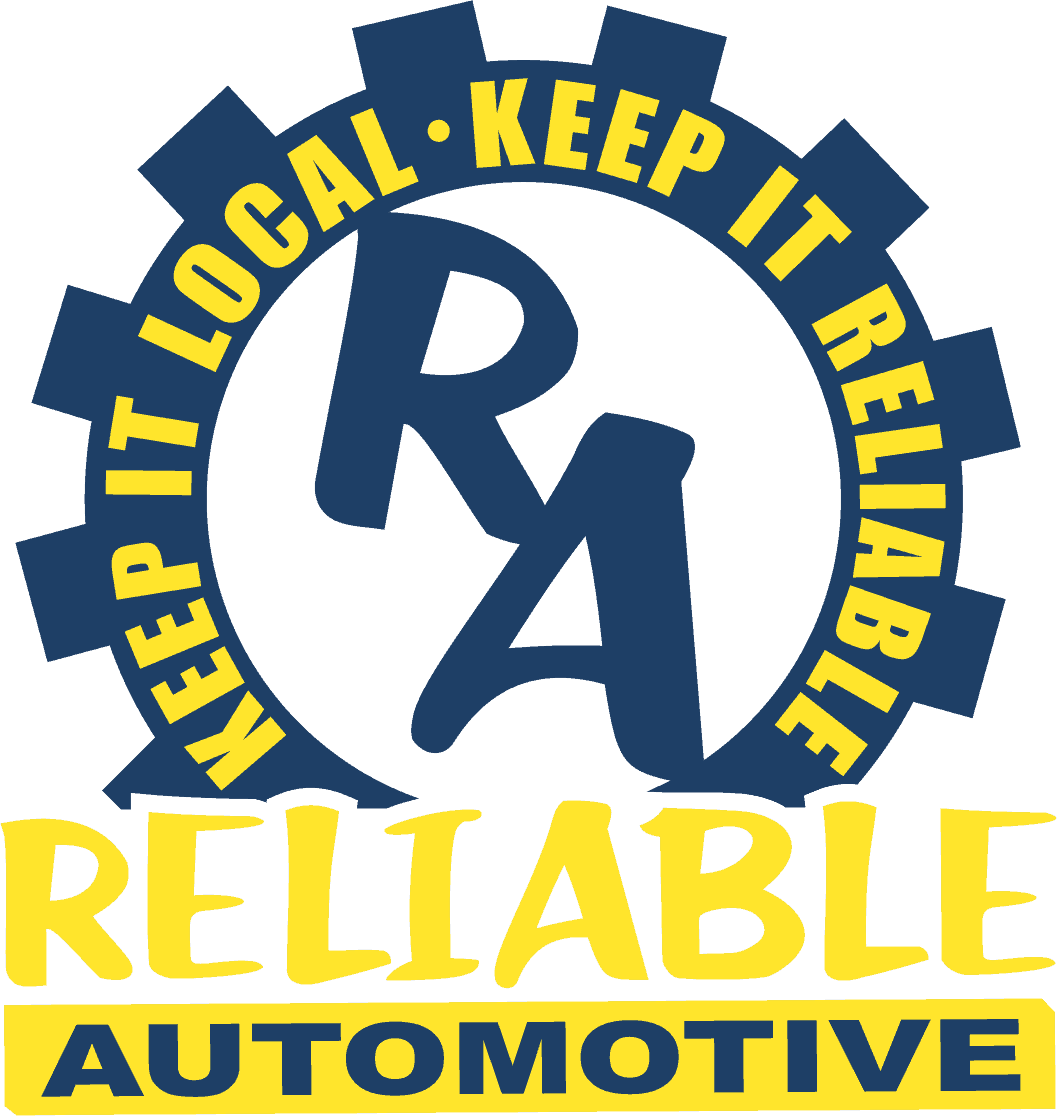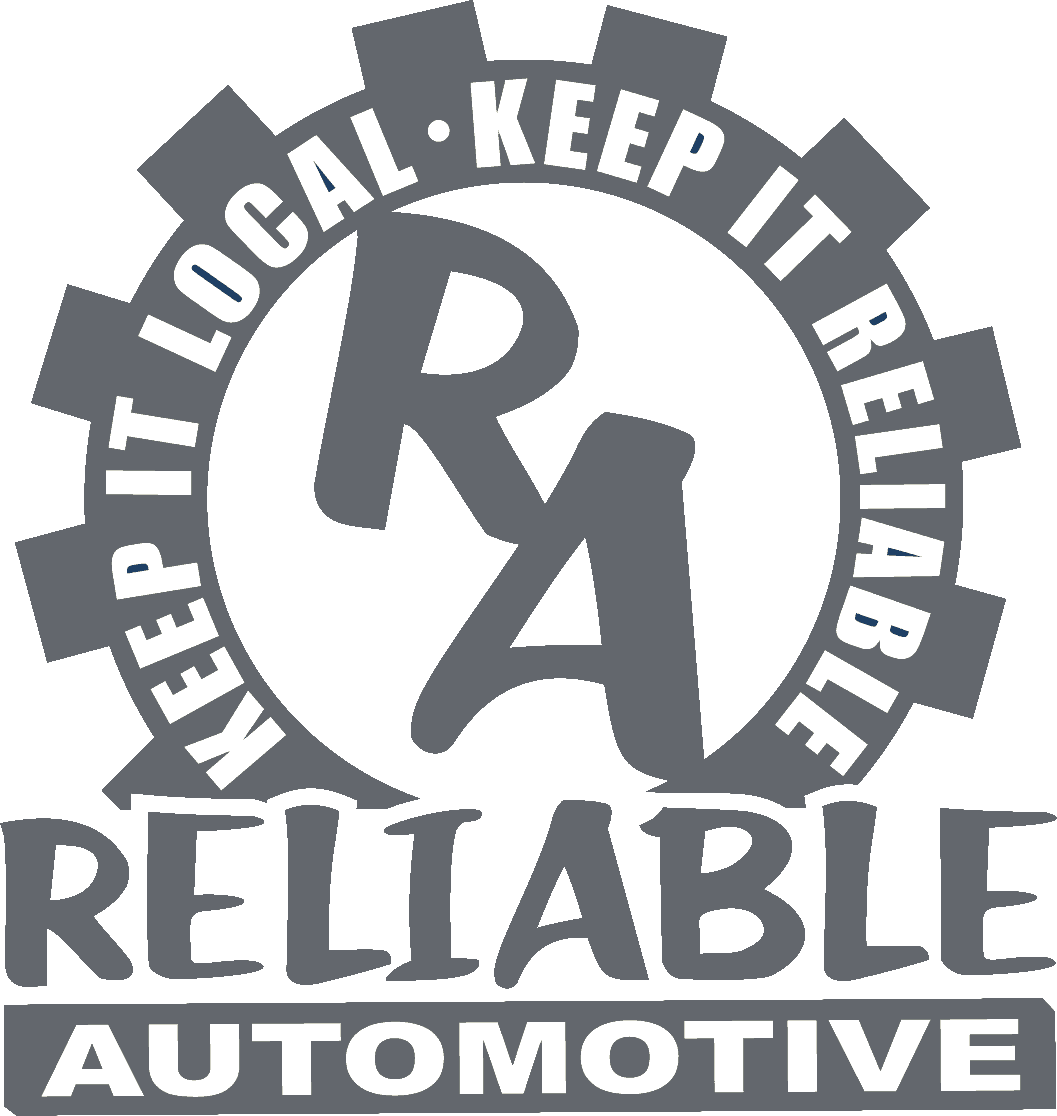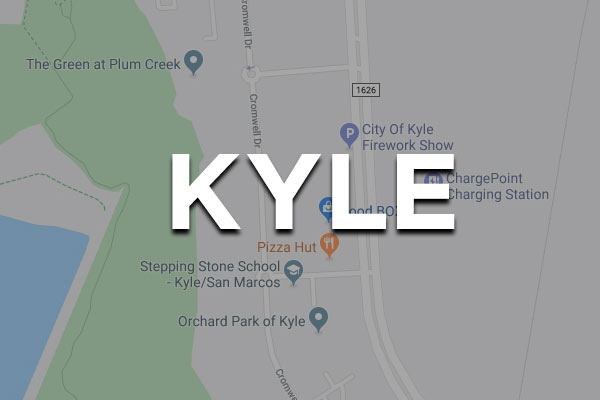
Every time you are driving and press the brake pedal, you count on your brakes to properly stop your vehicle. The brake system is absolutely the most important group of components when it comes to your vehicle’s safety while out on the road. While some repairs can wait for a more convenient time, brake repair is not one of those. When you are in need of brake repair, there is no time to waste. Your vehicle’s safety depends on it.
Having a better understanding of what exactly your brake system entails and the maintenance and repair services involved will help you not only properly maintain the system but also narrow down the options of local brake shops when your vehicle needs one.
In this guide, we’ve broken down the components found in your brake system, the brake repair and maintenance services usually offered at professional brake shops, and how you can help extend the life of your brake system.
The Components That Make Up Your Brake System
A passenger vehicle brake system consists of a variety of components that all work in unison to effectively bring your car, truck, SUV, or van to a stop. There are two types of vehicle brake systems: disc brakes and drum brakes.
Most of the newer model vehicles out on the roads today have a disc brake system on both their front and rear wheels since this type of system is more effective and efficient. Some vehicles do still have drum brakes on their rear wheels as you would find on older model vehicles. But, in most cases now, the vehicle manufacturer standard is for all four wheels to have disc brakes.
Your vehicle’s braking system is an interdependent combination of the following components:
- Brake pedal: The whole chain of events that occurred in order to bring your vehicle to a stop starts with the brake pedal. When it is pressed, the process of converting pressure into friction begins.
- Master cylinder: This component converts the pressure put on the brake pedal, which is non-hydraulic, into hydraulic pressure that the brake calipers use to squeeze the brake pads against the brake rotors.
- Brake booster: The brake booster amplifies the force that is transferred to the master cylinder from the brake pedal, reducing the non-hydraulic pressure that is needed to stop the vehicle.
- Friction components (in a disc brake system): These are used to create the friction needed to bring the spinning wheels to a stop; the components include the brake calipers, brake pads, and brake rotors (aka discs). The calipers hold and control the use of the brake pads on either side of the rotors.
- Friction components (in a drum brake system): These include the wheel cylinders, brake shoes, and drum. In a drum brake system, the wheel cylinder puts pressure on the brake shoes that then press against the inside of the drums to generate the necessary friction.
- ABS control module: Found in newer model vehicles, this component is part of the Antilock Braking System and regularly performs automatic diagnostic checks on the braking system. Then, when braking, it automatically sends the appropriate amount of hydraulic pressure to each of the wheels.
- Wheel speed sensors: Also found in newer, more electronically controlled vehicles, these sensors automatically monitor each wheel’s speed and relay this information back to the ABS control module.
- Emergency brake: Operating separately from the main braking system, this component is used to hold your vehicle in place when parked, especially on an incline.
To summarize how a disc brake system operates, when you press the brake pedal, the brake booster and master cylinder work in unison to push hydraulic brake fluid through the brake lines, which then activates the pistons in the brake calipers. These calipers then squeeze the pads against the brake rotors, generating the necessary friction to stop the wheels from spinning.
As you can see, in a disc brake system, the vehicle’s brake pads are an essential component. When you need to slow down or stop fully, the pads rely on pressure to generate a significant level of friction against the brake rotors. Because of this frequent friction, the brake pads are often the brake system’s first component to wear down and need replacement.
The Importance of Regular Brake Inspections
Keeping the brake system in good condition is vital to your vehicle’s safety and lifespan. Unfortunately, braking components will not last forever. That is why having in-depth brake inspections done regularly is so important. They allow for any minor issues to be detected and addressed early, ensure that all of the components are in optimal condition, and help extend the life of your vehicle’s brake system.
As a top local brake shop, we recommend bringing your vehicle in for a thorough brake check every 6,000 miles or 6 months, whichever comes first. You should also bring your vehicle in right away if you notice any new issues with braking. (See more on this below.)
The answer to how frequently brake services will be needed varies with every vehicle. The type of brake pads being used, driving habits, road conditions, etc., all impact the rate at which your brake components will wear.
How to Know When Brake Pad Replacement Should Be Done
Of course, during a brake check, one of the things that will be looked at is the brake pads’ condition. As mentioned above, the friction from daily use causes the brake pads to wear down over time. The safety of you and your passengers is at risk if the pads are totally worn down or defective. Brake failure causes roughly 300,000 accidents a year. You don’t want to end up a part of that statistic because you didn’t have brake pad replacement done when needed.
Realistically, there is no one-size-fits-all answer for how often brake pads will need to be replaced. Brake pad manufacturers give a wide range for the typical life of the pads, usually anywhere between 25,000 and 65,000 miles. This is because it is highly dependent on the type of vehicle, driving habits, etc. Generally speaking, brake pads often last, on average, around 40,000 miles.
As a reference, new brake pads will have 12 mm of friction material on them that helps slow or stop your vehicle. As a general rule at professional brake shops, the mechanic will suggest that the brake pads be replaced when the friction material gets down to a thickness of 4 mm or less. You definitely don’t want overly worn brake pads to start gouging out the metal of your rotors.
Most drivers do not regularly measure the brake pad thickness on their own. That is why it is so important to keep up with a regular schedule of brake system inspections (as well as other vehicle maintenance checks) and to trust professional brake experts to measure them. These mechanics have the experience and knowledge to perform the necessary brake services to ensure your vehicle’s safety on the road. They can also provide advice on how to extend the life of your brake system components.
Here at Reliable Automotive, we can thoroughly inspect your brake pads and other braking components and advise on any services that may be needed. When requested, while your vehicle is at our shop, we can also inspect it for an oil change or other auto service.
The Different Types of Brake Pads
Brake pads today are made of one of three types of friction materials: metallic, ceramic, or organic. Each one has its pros and cons, so being informed and asking your mechanic at the brake shop for advice is important when it comes to selecting new brake pads.
Here’s a quick breakdown of the three types of brake pads:
Metallic Brake Pads
- Most commonly used
- Made of a combination of bonding materials and metals
- Extremely durable
- Good overall performance
- Good heat dissipation ability
- Most economically priced option
Ceramic Brake Pads
- Designed for use in high-performance vehicles
- Made of bonding materials and ceramics (and sometimes cotton fibers)
- Lighter in weight than other types
- Durable
- Highest level of heat dissipation ability
- Usually the costliest option
Organic Brake Pads
- Made of a combination of recycled rubber, glass, and/or resin
- Environmentally friendly
- Wear down quicker than other types
- High heat dissipation ability
Your vehicle’s needs, your driving habits, and your budget will all impact which brake pads will be the best choice for you and your vehicle. Don’t be afraid to ask the opinion of your brake technician – they can help you make an informed choice.
What Is the Brake Rotor “Turning” and How Does It Help?
Your brake rotors play a vital role in generating the necessary friction to stop your vehicle. But, because they are metal, regular use will wear them down over time, reducing your vehicle’s stopping power. Plus, excessive heat generated from braking can also cause the rotors to warp.
To remedy these problems, as long as there is enough metal left to do so safely, your brake rotors can be resurfaced, also known as “turning” the rotors. In this process, each rotor is placed on a lathe and an extremely sharp bit is used to cut into the surface. This produces a smooth and even surface again and enables the brake pads to effectively “grab” the rotors to bring your vehicle to a stop.
If there is not enough metal left to turn the rotors effectively, they will need to be replaced.
Other Brake System Maintenance Services Usually Offered at a Brake Shop
Brake pad replacement and brake rotor turning are the two most frequently performed services at professional brake shops. But, usually, there are also additional brake services on offer that can help maintain optimal brake system operation when needed.
These brake system maintenance services include:
Brake Caliper Realignment
Sometimes, if a high-pitched screeching sound is coming from your wheel(s), the rotor and brake pad are improperly rubbing against each other because of a misaligned brake caliper. In this case, we’ll inspect the brake system and realign the calipers as needed to stop the sound and restore proper performance.
Brake Line Bleeding
Over time, small bubbles of air can become trapped inside the hydraulic brake line. This creates the feeling of “spongy” brakes or having to press the brake pedal almost to the floor before the brakes engage. If this is happening to you, this dangerous situation should be addressed ASAP. Large amounts of air in the brake system can lead to a complete brake system failure.
So, sometimes it is necessary to purge the system to ensure the safety of your vehicle on the road. The term “bleeding the brakes” essentially means removing any trapped air from the brake line. This enables your brakes to properly stop your wheels every time you press the brake pedal.
Brake Light Bulb Replacement and Wiring Service
Chances are, at some point, you’ve been behind someone who is slowing down, yet their brake lights are not working. This can be frustrating and sometimes even cause a rear-end collision by accident. The last thing you want is to be the one causing problems due to a blown brake light bulb or wiring issue. All of this can be avoided with regular brake system maintenance.
Here at Reliable Automotive, as a top local brake shop, we can perform all the services needed to help keep your brake system in top working order, allowing you to get back on the road worry-free.
Warning Signs That It May Be Time for a Brake Service
There are some specific warning signs to be aware of that point to brake system trouble. Knowing exactly what these are can help prevent a small issue from quickly turning into a need for major (and much more costly) brake repair. It will also prevent the chance of total brake failure happening while you’re driving.
The red flags that indicate it may be time to visit a brake shop include:
A Squealing Noise
One of the most obvious indicators is a loud squealing or screeching noise when braking. This may be the built-in “wear indicator” on the brake pads. Manufacturers include this feature to alert the driver that the friction material on the pads has become overly worn and needs to be checked ASAP and possibly replaced.
A Clicking or Rattling Noise
A clicking or rattling noise coming from the wheel usually indicates that a part of the brake caliper, which holds the brake pad in place, has become loose.
A “Soft” or “Spongy” Brake Pedal
Normally, you should feel a good amount of resistance when you press the brake pedal to stop your vehicle. If you notice that there is less resistance when pressing the pedal, which is referred to as a “soft” or “spongy” pedal, this usually indicates that there is a problem with the hydraulic pressure within the system.
The Vehicle Is Pulling to One Side
Your vehicle’s brake pads will not wear at the same rate. Sometimes, when one side has an overly worn pad, it can cause the vehicle to pull to that side when braking. Though, there are a couple of other things that can cause vehicle pulling as well. If this is happening to your vehicle, it’s important to have it checked ASAP to determine exactly what is causing it.
Brake Pedal Vibration
In many cases, brake pedal vibration when braking is caused by damaged or overly worn brake pads. Though, it can sometimes happen when dirt, oil, or another substance has contaminated the pads.
Brake Fade
When there is a reduction in the braking system’s stopping power, it is referred to as “brake fade.” This is evident when it takes noticeably longer for the vehicle to stop when you press the brake pedal. Brake fade is caused by repeated or sustained use of the vehicle’s brakes, especially at high speeds or while carrying/towing heavy loads.
Brake Fluid Leak
Brake fluid should never be actively leaking from underneath your vehicle. If you do have a brake fluid leak, it will appear as a light brown or light yellow puddle.
Your vehicle’s safety on the road can be significantly jeopardized by ignoring any of the above warning signs. If you are experiencing any of these things, bring your vehicle to your closest Reliable Automotive location right away. Our expert mechanics can pinpoint exactly what is going on within your vehicle’s brake system.
It is important to note that not all noises are indicators of an immediate brake problem. For example, moisture coating the brakes from recent rain can cause temporary squeaking or grinding sounds. Also, a buildup of dirt, rust, or grime can sometimes cause brake noises.
Having a brake inspection done by an ASE-certified mechanic is the best way to determine the condition of your brake system. Brake experts, like you’ll find here at Reliable Automotive, can provide more insight into exactly what brake services your vehicle may need.
Ways You Can Help Extend the Life of Your Brake System
There are a few simple changes you can make in the way you drive that can help extend the life of your brake system components, including:
- Using the same foot for braking and accelerating: Your left foot should never press the brake pedal before you’ve completely lifted your right foot off the gas. Attempting to brake while still even slightly accelerating will require much more work from your brake system.
- Obeying the speed limit: Having to brake hard for a sudden stop, especially from a high speed, also puts excess stress on the brake system components.
- Driving observantly: By being more aware of any vehicles around you, you’ll naturally give yourself enough time and space to brake more gradually. This will reduce the strain on your brake system.
- Allowing the engine to decelerate naturally: When you give yourself more time to come to a stop, you can let your vehicle coast and allow the engine to decelerate naturally. This significantly reduces your vehicle’s speed without having to rely on the brakes as much.
- Minimizing the weight of your vehicle: Reducing the excess weight in the trunk or back of your vehicle can help to reduce the braking power required to stop your vehicle.
- Having routine brake inspections done regularly: Keeping up with routine brake inspections will help maintain the safety of your vehicle and prevent costly repairs down the road.
Of course, you can’t really control the geography of the area where you drive. But just be aware that frequent braking in mountainous or even hilly environments will wear down your braking components faster. In those situations, keeping up with more frequent brake inspections will help ensure optimal operation.
Your Trusted Local Brake Shop for Expert Service
Having a basic knowledge of your vehicle’s brake system goes a long way in helping you properly maintain the various components and understanding common brake services.
When searching for local brake shops, let Reliable Automotive be your first choice for brake maintenance and repair. Our ASE-certified master mechanics use state-of-the-art tools and equipment to properly service your vehicle’s brake system, while also providing the highest levels of customer service at reasonable prices. And, for even better deals, make sure to check the latest brake specials on our coupon page.
Our top-quality brake services include:
- A thorough inspection of all of the brake system’s friction and hydraulic components
- Installing new, premium-quality brake pads (and/or shoes, where applicable)
- Resurfacing (aka turning) the brake rotors (and/or drums, where applicable)
- Installing new brake rotors
- Installing new brake calipers
- Flushing and replacing brake fluid
- Lubricating brake calipers and related hardware
- Inspecting and replacing wheel bearings (where applicable)
After any brake service is completed, your mechanic will test-drive the vehicle to make sure that the brake system is working properly before you get back on the road.
Reliable Automotive is the top choice in local professional brake shops. You can count on our automotive service experts for professional brake repair and any other vehicle service needs you may have. This includes everything from routine oil changes to a complete transmission overhaul.






